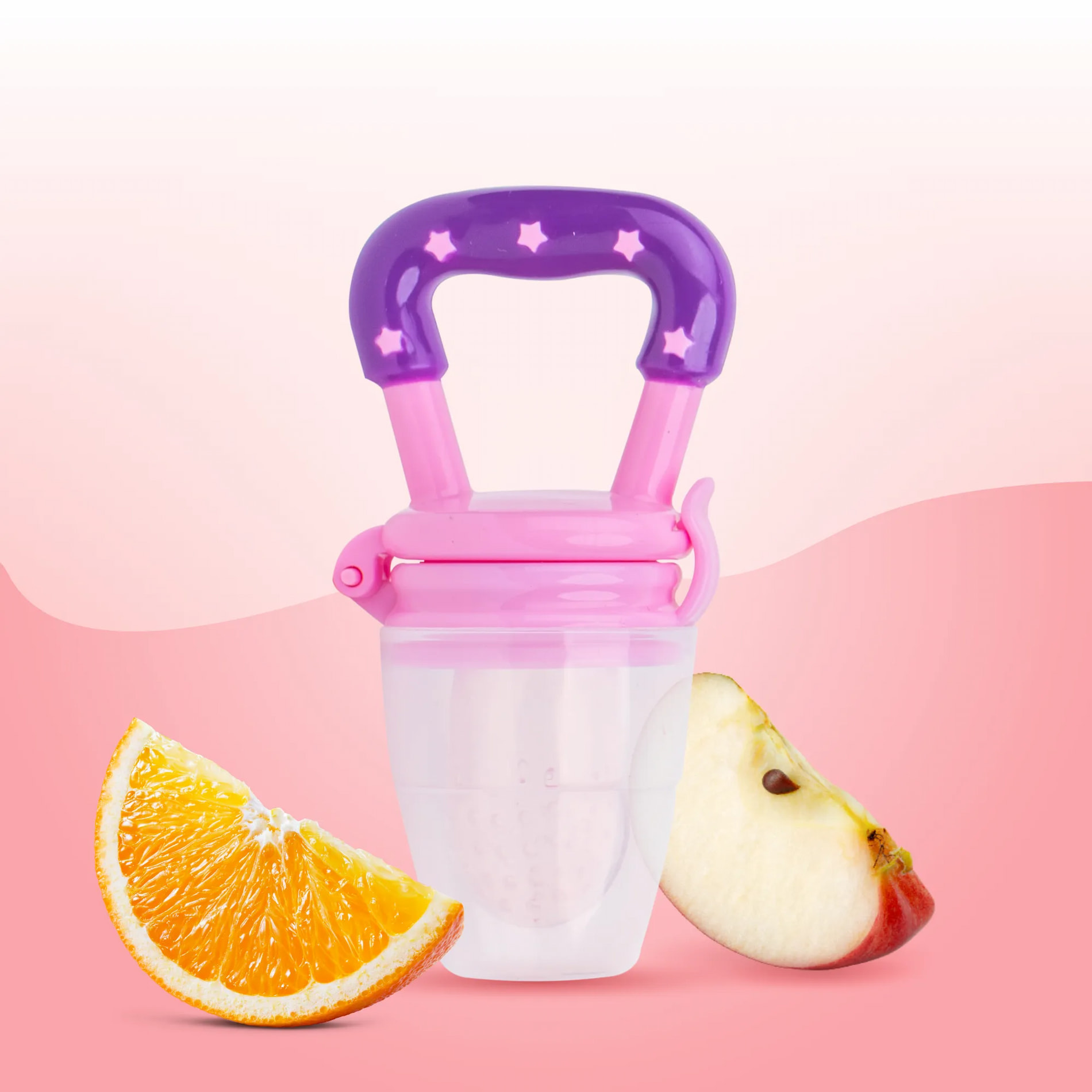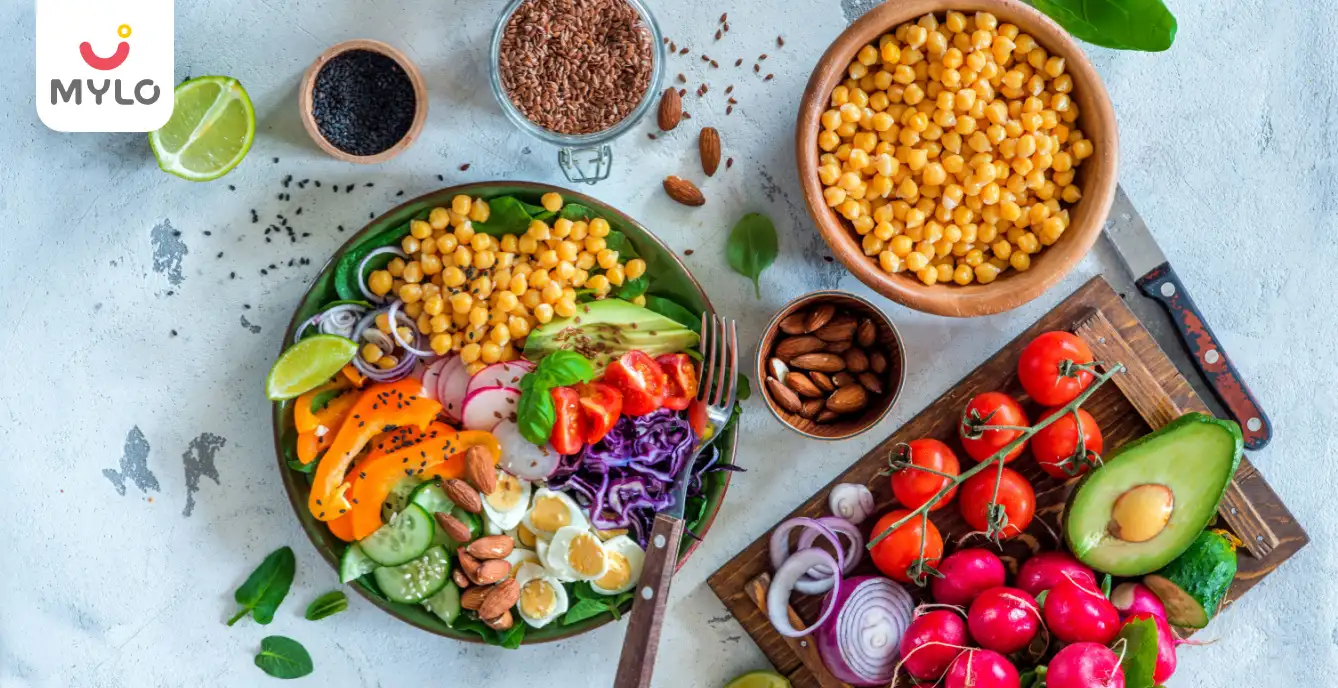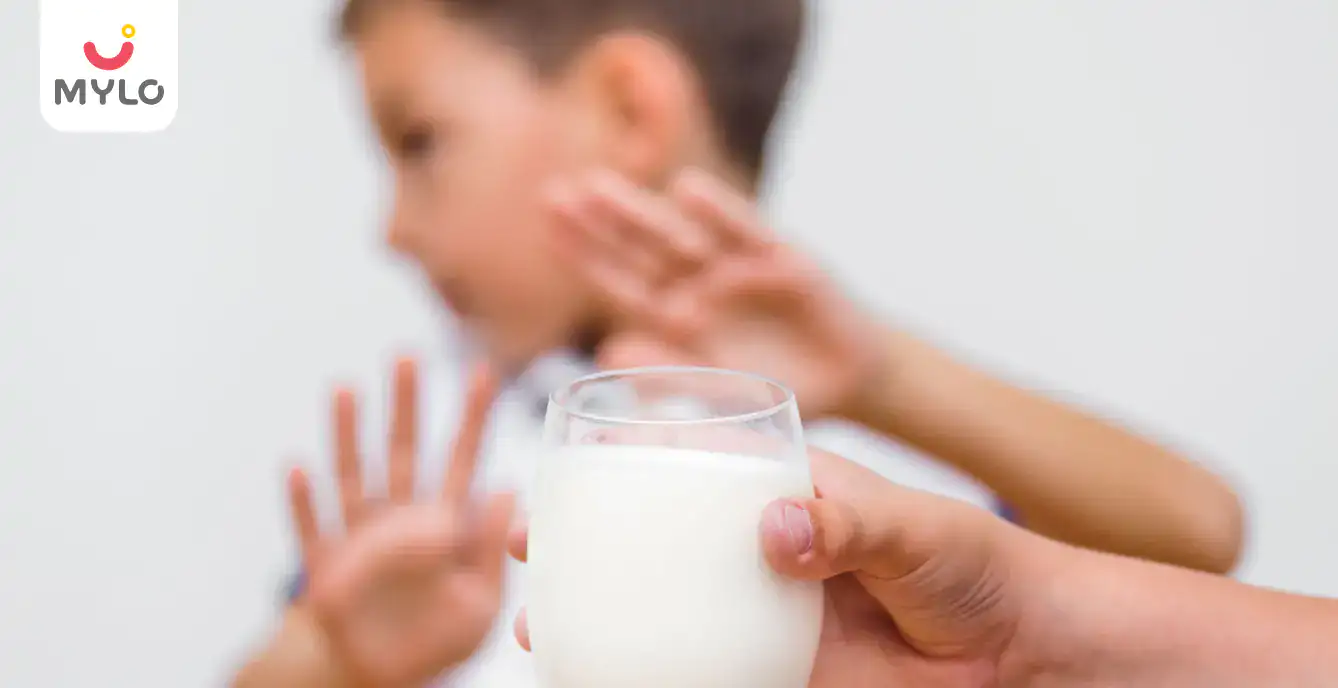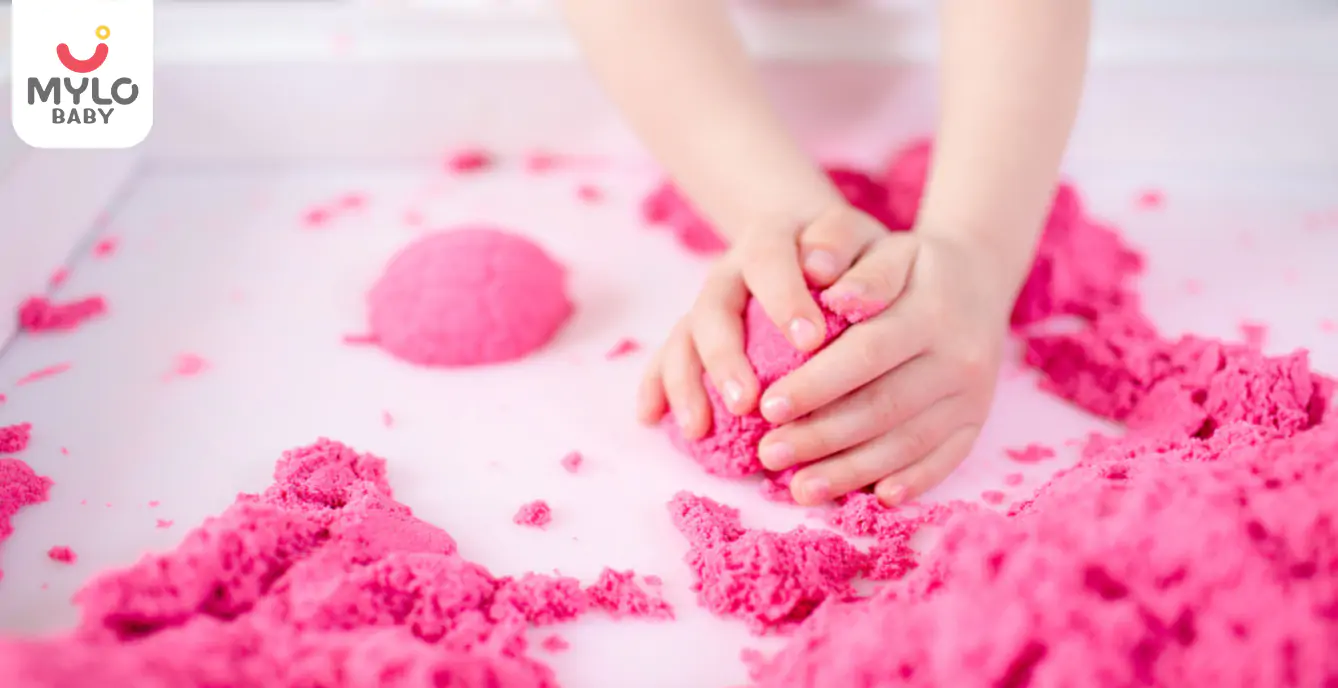Home

At What Age Can You Start Using a Fruit Nibbler for Your Baby?
In this Article

Baby Care
At What Age Can You Start Using a Fruit Nibbler for Your Baby?
Updated on 18 July 2023



Medically Reviewed by
Dt. Sakshi Bhambri
Dietician - Msc Food Nutrition And Dietetics
View Profile

Introducing solid foods to your baby's diet is an exciting milestone, but it can also be a bit overwhelming for new parents. One of the tools that many parents use to introduce fruits and vegetables is a fruit nibbler. This handy gadget allows your baby to safely explore new flavors and textures without the risk of choking on large pieces of food. But at what age can you start using a fruit nibbler for your baby?
In this article, we'll explore the benefits of fruit nibblers, when to introduce them to your baby, and some tips for using them effectively.
What is a baby fruit nibbler?
Once your baby starts chewing semi-solid foods, they are ready to enter the world of various flavours and tastes. You can start feeding them different food items, including fruits, vegetables, and more. To help ease the process of introducing solids to your baby, a fruit nibbler comes to be of much use.
A vegetable and fruit nibbler is a small silicone pouch that allows your baby to chew on solid foods without putting much work and without the risk of infant choking. The feeder cuts the food into tiny bits, which becomes easy for your baby to chew and digest. Also, the silicone pouch acts as a teether for your baby and keeps them engaged when they get cranky.
When is the right time to introduce fruit nibbler to your baby?
Most babies give various signs when they are ready to start eating solid foods, and when you see these developmental signs of readiness, it is time to bring in the feeder gadget. Usually, these signs appear when they turn six months old.
- Your baby develops a good neck and head control.
- They can sit upright without support.
- They open their mouth when you bring a spoon near their mouth.
- Your baby starts to reach out for food, watches you eat, and shows interest in food.
A nibbler can be of help if your baby has just started taking semi-solid foods, and you want them to have a healthy diet. You can also try Mylo Feels Natural Ultra Soft Fruit & Food Nibbler for your baby, which makes it easy for your baby to suck and chew the fruits and veggies. It is easy to clean and sterilize and has a bite-resistant mesh as well. Additionally, it is BPA-free and can help prevent choking hazards.
What foods can you add to your baby’s fruit and vegetable nibbler?
Some of the items that you can add to your baby’s nibbler include raspberries, melon, banana, mango, blackberries, strawberries, grapes, sweet potatoes, pear, peeled cucumber, and much more. Additionally, you can add soft and boiled vegetables to your baby's fruit nibbler, such as cooked and diced carrots, sweet potato, zucchini, peas and cucumber. Don’t limit your baby to these fruits, and keep experimenting.
What are the benefits of using a fruit nibbler for your baby?
Here are some benefits you and your baby can enjoy while using a fruit nibbler:
1. Reduces the risk of infant choking
The feeder breaks the food into small bits for your baby so that they can chew them with ease. The food becomes easy to swallow and digest for your baby, thereby reducing the risk of infant choking.
2. Allows your baby to eat fruits and vegetables
The nibbler allows your baby to take the health benefits of various fruits and vegetables as it makes it easy for them to eat without having them to chew much.
3. Enables your baby to explore variety of foods
The fruit nibbler also allows your baby to taste different fruits and vegetables with ease. Babies usually have limited options to eat when it comes to semi-solid foods, but with the help of a feeder, they can eat all the various fruits and vegetables and enjoy their amazing flavours.
You may also like: Starting Solids: A Guide to Introducing Fruits and Vegetables to Your Baby
4. Inspires your baby to eat independently
The fruit and vegetable nibbler also has a handle that allows your baby to hold the feeder with ease and nibble on its nipple to eat fruits and vegetables. The handle allows the baby to hold the feeder all by themselves without your help needed.
5. Provides oral stimulation
Also, the feeder has a bite-resistant mesh, which also works as a teether for your baby. So, if your baby is being fussy or crying, you can always hand them their feeder and let them chew on it.
The Bottomline
In conclusion, fruit nibblers can be a great way to introduce your baby to new textures and tastes. While there is no set age for when to start using a fruit nibbler, it is generally recommended to wait until your baby is at least six months old and has started on solid foods. It's important to supervise your baby while they use a fruit nibbler and to only use appropriate foods that are cut into small pieces. As with any new feeding tool, it's always best to consult with your pediatrician to ensure that your baby is ready for this type of feeding and to get further advice on how to safely and effectively introduce your baby to new foods.

Fruit & Food Nibbler - Pink
Convenient to Introduce Fruits & Veggies to Baby | Ultra-soft Silicone Mesh for Easy Chewing | Easy One Snap Filling | Helps Relieve Teething Discomfort
₹ 149

4.4
(2922)


9594 Users bought





Medically Reviewed by
Dt. Sakshi Bhambri
Dietician - Msc Food Nutrition And Dietetics
View Profile


Written by
Priyanka Verma
Priyanka is an experienced editor & content writer with great attention to detail. Mother to an 11-year-old, she's a ski
Read MoreGet baby's diet chart, and growth tips

Related Articles
Related Topics
RECENTLY PUBLISHED ARTICLES
our most recent articles

Celebrate Breast Feeding Week
Fever During Breastfeeding: Tips from Experts for New Moms

Diet & Nutrition for Mothers
Indian Food to Increase Breast Milk: Everything You Need to Know

Lactose Intolerance
Lactose Intolerance in Babies: A Parent’s Guide to Identifying and Managing it

Medical Procedures
TESA IVF: How This Procedure Can Help You Achieve Your Dream of Parenthood

Sensory Development
How Can You Encourage Sensory Play for Your Baby and What are Its Benefits?

IVF Pregnancy
After How Many Weeks IVF Pregnancy Is Safe: Understanding The Ideal Timeline
- Exploring the Senses: 9 Incredible Benefits of Sensory Play for Your Child's Development
- The Ultimate Guide to Childproofing Your Home
- Start Their Love for Reading Early: The Best Books for Baby's First Library
- CMPA (Cow's Milk Protein Allergy): Identifying Symptoms and Understanding Treatment
- Birth Control Options While Breastfeeding: Balancing Parenthood and Contraception
- Period During Breastfeeding What Every New Mother Should Know
- Role of Stories and Rhymes in Your Baby’s Brain Development
- Intracytoplasmic Sperm Injection (ICSI) How It Can Help Treat Male Infertility
- Baby Sleeping While Breastfeeding: Understanding the Causes and Solutions
- Lump in Breast During Breastfeeding How to Identify, Treat, and Prevent Lump Formation
- Understanding Down Syndrome: A Comprehensive Guide for Parents
- No Breast Milk After Delivery: What to Do & What are the Factors Responsible
- Lactation Failure: A Comprehensive Guide to Understanding the Causes and Solutions
- Breast Pain During Pregnancy: What to Expect and How to Find Relief


AWARDS AND RECOGNITION

Mylo wins Forbes D2C Disruptor award

Mylo wins The Economic Times Promising Brands 2022
AS SEEN IN
















- Mylo Care: Effective and science-backed personal care and wellness solutions for a joyful you.
- Mylo Baby: Science-backed, gentle and effective personal care & hygiene range for your little one.
- Mylo Community: Trusted and empathetic community of 10mn+ parents and experts.
Product Categories
baby carrier | baby soap | baby wipes | stretch marks cream | baby cream | baby shampoo | baby massage oil | baby hair oil | stretch marks oil | baby body wash | baby powder | baby lotion | diaper rash cream | newborn diapers | teether | baby kajal | baby diapers | cloth diapers |








